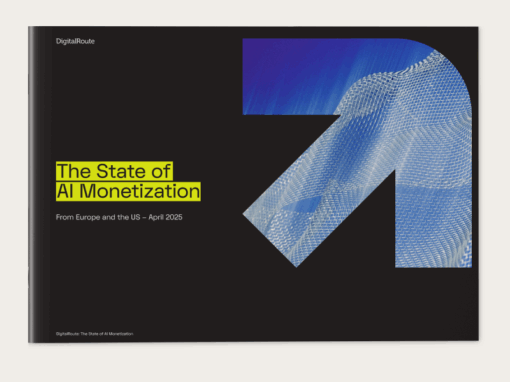Introduction
Many manufacturers are still just in the initial phases of their digital transformation. But the increased availability and affordability of sensors, radio technologies, and IoT platforms means that the pace of digitalization in production industries is steadily accelerating.
To take the next steps forward in digitalization, the frontrunners in manufacturing realize that they need more robust solutions to manage their data. To find value from the massive amounts of data that they’re already collecting today, and to keep scaling up, most major manufacturers will require a purpose-built solution for service usage data management.
In this article, we’ll provide a brief overview of the value of manufacturing usage data management in the digital transformation of your business. We also share strategies for you can capture that value through better usage data management.
What Is Manufacturing Usage Data?
Quite simply, usage data tells you how your products are being used and/or how your services are consumed.
For most manufacturers, that involves three basic categories of data:
- Product Usage Data
This is data related to tracking how customers use physical products, which is the key to offering servitization or outcome-based billing models. This data also provides insight into how machines perform in real-world conditions, which can be applied to build continuously better products. - Software Usage Data
This is about understanding how customers interact with software solutions, insight which can be used to drive Agile development. To support interoperability, OEMs also need to understand how their software interacts with other platforms in the customer’s IT architecture. - Production Systems Usage Data
This is about understanding how machines and digital solutions are performing on your own factory floor. In-house system usage data can be applied to support Lean production processes and the evolution to predictive maintenance (PdM).
The Value of Managing Your Manufacturing Usage Data Efficiently
Transforming to new business models such as servitization means that across an entire organization, the objectives and KPIs for each business area also transform. In a data-driven business, everyone is dependent on clean, accessible data.
Delivering that clean data is the job of the CIO and IT department. With a purpose-built solution for usage data management, their job becomes a lot easier, and the importance of their work becomes more evident.
With clean usage data, each department in a manufacturing business can become more efficient and more innovative.
Faster Innovation Cycles
CIOs across industries are under pressure to speed up innovation. In today’s tight economy, that pressure is only increasing, but automating the collection and processing of usage data can help make things easier in a number of ways.
First, automated data management frees up time for data scientists and IT teams to create more value, rather than performing manual tasks. Automation also eliminates the human error that comes with manual work.
To become more agile, R&D teams need to be able to take control of usage data. Then, the value of clean usage will be evident in the development of physical products, software offerings, and bundled solution packages.
59% of CIOs say that digital initiatives take too long to complete, and 52% say they take too long to realize value.
– Gartner, 2022 CIO survey
Flexible Service Monetization
As outcome-based billing models develop over time, it will be crucial for manufacturers to have the flexibility to customize price models that fit the customer’s needs. Doing so requires granular visibility of usage data generated by machines and digital services.
A key challenge in monetizing services in new ways is how you incorporate new charging metrics into the billing landscape. With a system in place to capture, verify, aggregate, bind, and enrich usage data before it reaches the billing system, manufacturers have greater flexibility to design price models, as well as accurate data to create customer invoices.
Easier Partner Settlements
Succeeding in the world of IoT and connected products requires most manufacturers to build a partner ecosystem. Rather than try to build a complete solution themselves, most OEMs work with an array of specialist partners.
Depending on the customer-facing package, a basic IoT solution ecosystem might include sensor and control system integrators, software vendors, connectivity providers, and maintenance service providers.
As the scale and complexity of ecosystems grow, making sure all those players are paid accurately becomes more challenging. With a purpose-built solution for usage data, you can automate revenue sharing and partner settlement processes, and establish a strong audit trail to ensure partners are being paid and invoiced correctly.








